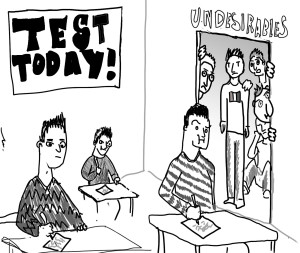Educational Exclusion
December 19, 2013

Maryland currently ranks with the second-highest state score in fourth grade reading and sixth- highest state score in eighth grade reading.
However, our state also ranks the highest in something slightly less academic: student exclusion rates on the 2013 National Assessment of Educational Progress (NAEP). Because the NAEP does not allow the “read aloud” accommodation, Maryland excluded 62 percent of learning disabled and ELL’s (English Language Learners).
Although it may seem as if the state of Maryland is skewing results for an advantageous purpose, Clayton Best, Maryland’s NAEP coordinator, ensured that the inflation of scores was not intentional. “What concerns me is the implication that this is a conscious process to eliminate students taking the test to improve the NAEP scores,” Best said. “There’s no motivation to do that at all.”
A study conducted by the University of Melbourne’s School of Psychological Sciences found that learning disabilities affect 10 percent of children and according to the Institute of Education Sciences, 11 percent of American public school students are ELL students.
If two to three students per each classroom are learning disabled or are ELL students, the state of Maryland should lobby to the NAEP to adjust their guidelines to permit the testing accommodations for all schools across the nation.
A “read aloud” test may not test for a student’s ability to decode words of a passage, but it continues to properly test a student’s comprehension. With technology becoming available in schools, the NAEP can utilize computers to proctor the “read aloud” testing. Instead of accusing Maryland education officials of inflating the results for selfish purposes, the NAEP should meet the needs of students who are legally entitled to accommodations.



